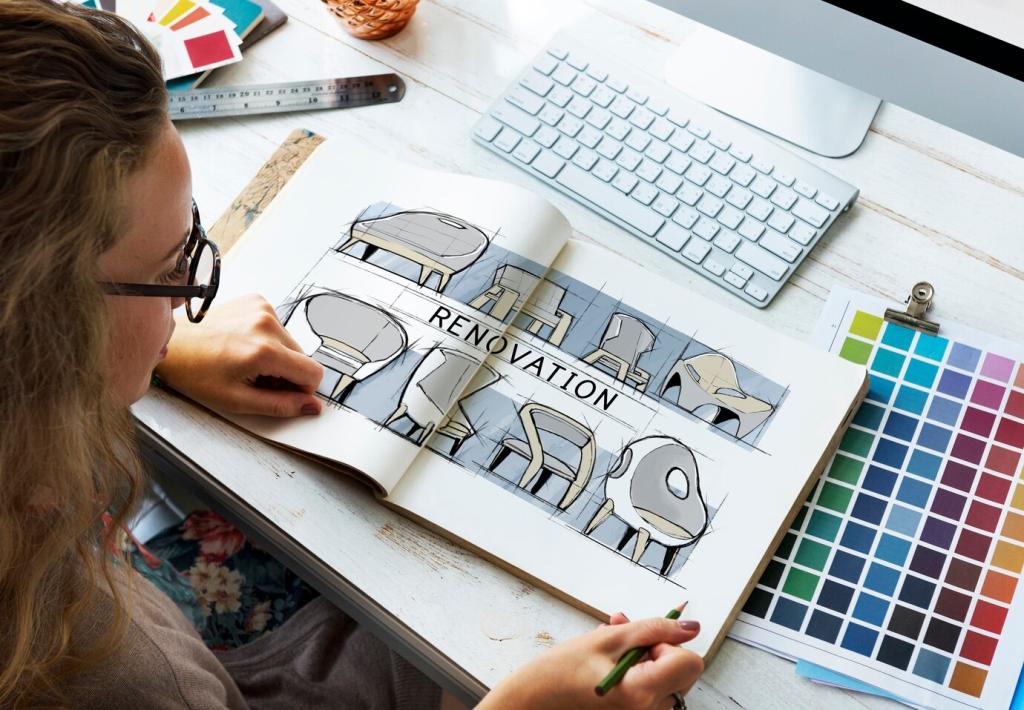Chosen Theme: Artisan Craftsmanship in Modern Homes. Step into a world where hand-finished details, regional traditions, and modern design language meet. Discover how makers shape spaces that feel grounded, soulful, and unmistakably yours—then tell us which craft you’d bring home.
Heritage Meets Innovation
A hand-split oak bench beside an ultra-slim LED track tells a fresh story: tradition doesn’t resist technology, it enriches it. When time-tested joinery meets thoughtful engineering, spaces gain warmth without sacrificing precision or contemporary performance.
The Human Touch You Can Feel
Brushstrokes in lime plaster, the faint tool marks on a forged handle, or the subtle irregularity of hand-glazed tiles offer tactile clues. These clues invite touch, curiosity, and conversation, reminding guests that someone’s hands made this, lovingly and deliberately.
Enduring Value Over Fleeting Trend
Craft pieces evolve with use, developing a patina that celebrates life’s small rituals. Rather than chasing novelty, you cultivate continuity—a home that grows richer with every scratch, oiling, repair, and story shared around a table made to last decades.
Materials and Methods That Define the Look
Honest Woods and Traditional Joinery
Quarter-sawn white oak, walnut, and ash carry distinctive grain patterns that glow under oil finishes. Mortise-and-tenon joints resist time and humidity shifts, reducing creaks and gaps. Wood speaks softly, but you’ll hear it immediately in a calmer visual rhythm.
Clay, Lime, and Natural Plasters
Lime plaster subtly modulates light, softening shadows throughout the day. Natural pigments give depth without harsh uniformity. When you run your hand across the wall, there’s a slight mineral drag that feels grounded and strangely soothing, almost meditative.
Forged Metalwork and Hand-Patinated Finishes
Blackened steel railings and hammered brass pulls frame sightlines and anchor cabinetry. Controlled oxidation yields patinas that evolve beautifully. You won’t confuse these with stamped parts; each piece carries slight variations, like signatures from the forge.


Collaborating With Makers: From Idea to Installation
Start with local studio tours, craft fairs, and architect referrals. Look beyond portfolios for process transparency and communication style. A maker who welcomes questions about materials and maintenance will likely deliver work that lives well in your home.
Collaborating With Makers: From Idea to Installation
A concise brief—use, mood, dimensions, and constraints—saves time. Request material samples and mockups when possible. Expect adjustments after seeing how light, scale, and touch feel in situ, because perfection is discovered, not drafted in a single pass.
Room-by-Room Transformations
Bespoke oak cabinetry with dovetailed drawers pairs beautifully with hand-glazed tiles that catch morning light. A forged pot rack keeps essentials ready, while a stone sink, subtly honed, mutes clatter. Cooking becomes choreography, guided by intentional, tactile design.


Room-by-Room Transformations
Handwoven rugs, leather sling chairs, and sculpted coffee tables invite slow evenings. A ceramic lamp’s dim glow reveals the throw’s weave, while a plastered fireplace softens echoes. Guests notice the quiet layers first, then the stories stitched beneath them.

Commissioning nearby makers reduces transport emissions and strengthens community knowledge. You learn the story behind every board and tile, and sometimes even visit the workshop, building pride each time you see that piece earn its keep at home.

Seek responsibly harvested timber and recycled steel or brass when available. Ask for documentation and finishing details. The aim isn’t perfection at any cost; it’s informed choices that align your home’s beauty with your values in measurable, lasting ways.

Your commission feeds a living tradition—apprentices learn, studios thrive, and regional styles endure. Over time, households become small museums of craft, not for display alone, but for daily use. That ongoing relationship enriches both maker and homeowner.
Care, Repair, and Patina
Simple Routines, Big Rewards
Quarterly oil for wood, gentle soap for natural stone, and soft cloths for metals keep textures vivid. Avoid harsh chemicals that flatten finishes. A little time invested regularly ensures pieces age gracefully and continue to bring daily satisfaction.
Repair Instead of Replace
Scratches, dents, and loose joints are invitations to reconnect with the maker. Skilled touch-ups restore strength and story. Rather than hiding history, good repairs highlight it, proving that resilience and beauty can grow together over many years.
Welcoming the Patina
Brass that darkens, a tabletop that softly burnishes, plaster that whispers with subtle variation—these are living finishes. Embrace them, because they chart family milestones, celebrations, and quiet mornings, turning surfaces into personal, time-traced maps.
Stories That Make a House Feel Like Yours
A reader salvaged her grandfather’s walnut slab from a barn and worked with a local woodworker to craft a slender console. The old nail holes remained, filled with resin like tiny windows into another time, sparking conversations at every gathering.

Stories That Make a House Feel Like Yours
Another couple celebrated a new baby with a woven wall hanging dyed in garden hues. Each thread color marked a month of anticipation. Their living room now holds both art and memory, a daily reminder that beauty can gently measure time passed.
Join our mailing list
